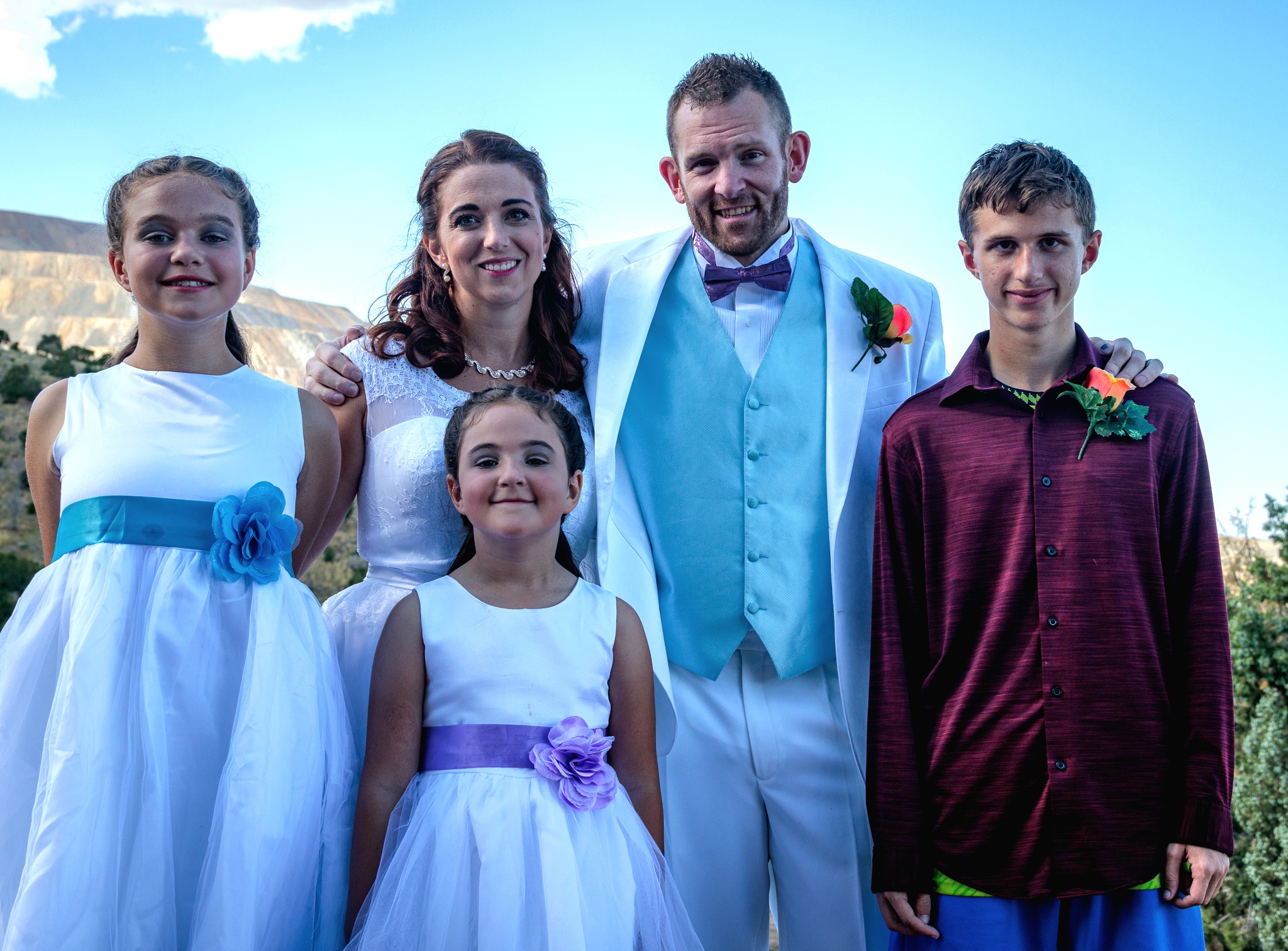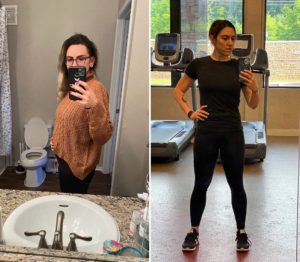
Amanda hopes her cancer journey is a positive example for her kids
April 22, 2024
This is a guest post by Amanda Reitz, a mother of three children who were 13, 9, and 5 years…
Read More
I hate this body.
The other day, I went through my old selfies—my pre-surgery selfies. I scrutinized every inch of the body on the screen of my phone—every dip and curve and cut and line that I spent nearly a year meticulously sculpting. I compared that body to this body—the body that is now a little bit softer and a little bit weaker, the body that is now defined by cancer. I let myself get lost in nostalgia, remembering how I felt in every inch of that body.
I sometimes long for that body.
Before my cancer diagnosis, I was on a path to becoming a fitness coach and accelerating my training as a Muay Thai fighter. I also finally reached a place with my nutrition that felt comfortable—that felt safe after spending most of the pandemic confronting my issues around disordered eating and body dysmorphia. But all that vanished into thin air on September 30, 2020.
Poof.
I was desperate to keep my progress—to make sure my detour wasn’t prolonged. I researched and researched and researched. I made plans to ease back into working out. I formed a wellness support circle that would help keep me grounded—that would motivate me to test my limits but also encourage me to slow down. After all, I go all in—too in sometimes. The idea of “rest and recovery” is still foreign to me.
But when it came to maintaining my progress, I was at a lost. I couldn’t find any information out there for people like me—for lean and muscular athletes who happened to have just offloaded a kidney. There were no tips or tricks on how to adjust your diet to your new reality—to balance your macronutrients in a way that would stymie the loss of muscle or change in body composition. Instead, I came across article after article on diets for people with kidney disease, both early and advanced. I could take but so much from that advice.
I found no solace in the fitness space, either.
“For a healthy adult…”
I couldn’t escape this line.
I saw this phrase used, time and again, as a caveat to advice around protein intake. The current recommended daily allowance (RDA) for protein is 0.5 to 0.8 g per kg of bodyweight, per day. For athletic people, the RDA can be double or triple this threshold. But for people like me, with compromised renal function, the amount of protein we should ingest may be much, much lower to minimize wear and tear on the remaining kidney, which may or may not be operating at its optimal function.
This isn’t the first time in my life that I’ve had to deal with limitations. Two decades ago, I was in a car wreck that caused permanent damage to my cervical vertebrae. The two herniated discs in my neck have restricted range of motion in my upper body and hips to a considerable degree. Through trial and error, I had to find a way to work with my body—to push what it could do and honor what it couldn’t.
Neither my damaged neck nor protein restriction mean I’m unhealthy, though. I can run faster than my family members… who all have two kidneys. I can lift heavier than my boss… who has two kidneys. I can kick harder than my training partner… who has two kidneys.
This, of course, doesn’t mean they’re unhealthy, either. Health comprises a multitude of interconnected factors, which means one macro restriction cannot define whether or not I or any of my fellow kidney cancer survivors are healthy. Yet, “For a healthy adult” is still used over and over again whenever any fitness professional discusses protein or any other modification, whether nutritional or physical.
It’s time we change this narrative.
I know this body is still adjusting to the ramifications of cancer. I know this body is still healing itself from the inside out. But I look at my stomach, and my scars, and my loose flesh, and my added pounds, and remember how and why they came about. I remember that I had no choice but to find myself here.
Cancer is traumatizing, and slipping into this dark space from time to time is part of the process.
But my friend and coach reminded me that my body, even its current state, is still a resilient body. After all, limitations don’t mean we can’t punch and kick and lift and push ourselves to do extraordinary things; they just mean that we have to find the right ways to do so for our bodies. And though I am learning how to love this body, I know that it is still capable of those extraordinary things, even if it’s a bit more bruised.
After all, athletes can be diabetic, asthmatic, or cancer survivors. But they are also strong, driven… powerful.
This guest post is by Annamarya Scaccia, a writer, fitness expert, and kidney cancer survivor. Follow her on Instagram @stillwellfitness.